Below are simple instructions on how to properly mount a blank canvas.
1. Build the Frame
The First thing you will need to do is build a frame to stretch the canvas on. If you are not an experienced carpenter don’t worry, this is very easy to build with a few common tools.
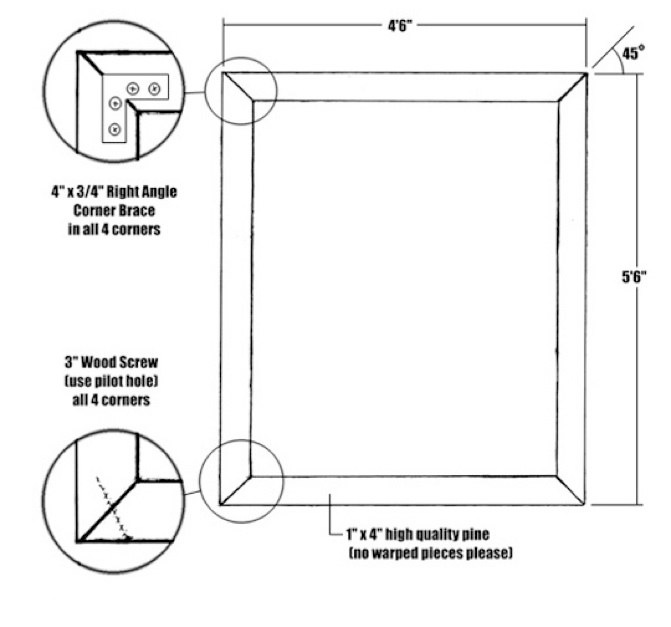
Double Fastened System:
Each corner has two fasteners:
- 4″ corner brace (or largest available up to 6″)
- 3″ wood screw (the 3″ wood screws are often accidentally overlooked) Use a pilot hole for the wood screw.
Tip! – The pilot holes are most easily drilled prior to frames assembly.
Additional Materials Needed:
- box of 1/4″ Arrow T50 staples (see picture below)
- Handheld Stapler
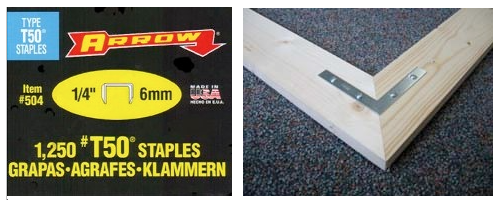
Here are the staples and a picture of what the finished corners should look like.
2. Lay the Canvas on a table or clean Floor Face Down
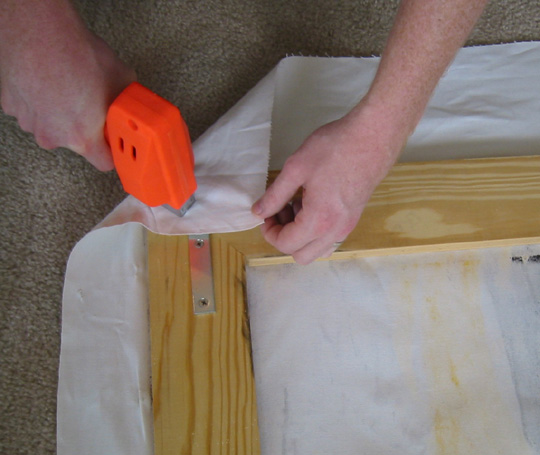
Pull the canvas over all 4 corners of the frame and loosely attach them with a staple one at a time. This is only to hold the canvas in place while you do the real work.
Attaching the 4 corners keep the canvas from flopping around while you work.
TIP!!!
- You will not want staples longer than 1/4″ because these need to be pulled out later!
3. Begin the stretching process (old method… see video for easier process)
For this next step a buddy will come in handy.
If you do not have a buddy handy, anyone you trust with a staple gun will do.
- Two chairs that you can stand will come in handy.
- Set the two chairs about 1 1/2 to 2 feet apart from each other.
- Hop up in one chair and have your helper hop up in the other with the staple gun.
- Now set the painting on its side between the two of you.
- Standing on the chairs gives you a little extra height so that you can properly staple the sides.
- You are going to start stapling in the middle of each side and work your way toward the edges.
- Sink the 1st staple and flip the frame 180 degrees. Pull the canvas pretty tight.
- Sink the next and flip it 90, then 180 again.
- You should now have a staple in the middle of each side so that there is a tight diamond shape stretched into the canvas.
- Next staple about 4″ on either side of the staple you just sunk. Flip 180 degrees… Repeat.
- With each staple you are going to pull the canvas both away from the center and away from its neighboring staple. (In a diagonal direction)
- Continue doing this until you get to the edges.
Tip!!! – Don’t be nervous, take your time.
You are using 1/4″ staples so if you make a mistake slowly and gently pull out the bad staples.
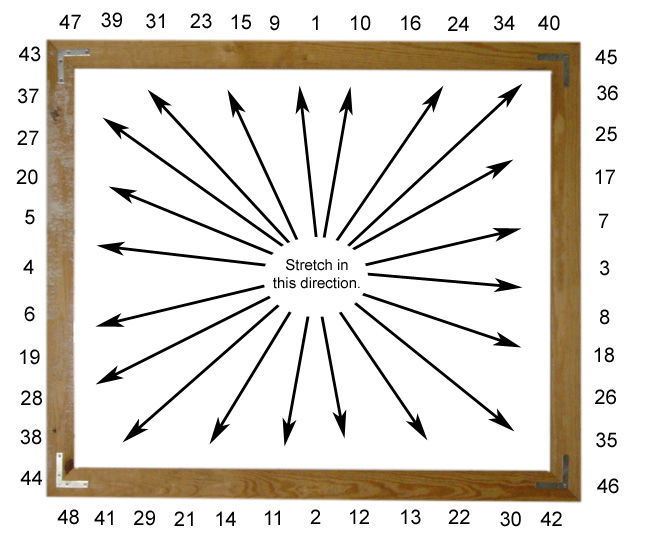
Shown above is a touch estimation of where the staples will go.
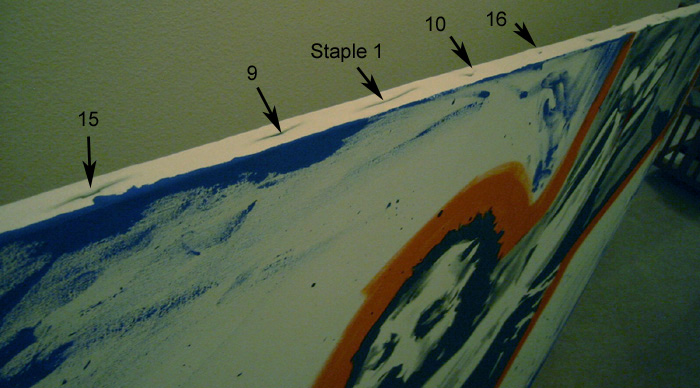
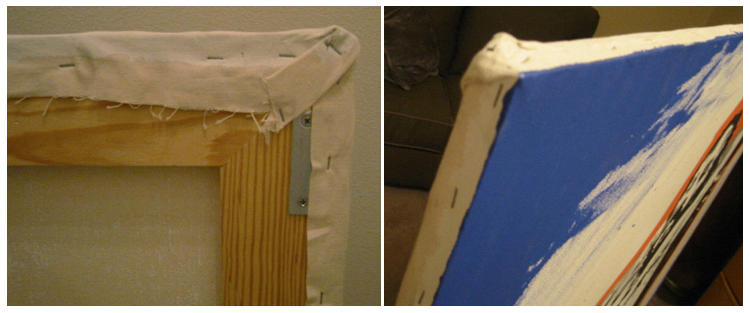
Once the four sides are completely stretched lay the painting artwork facing down again and attach the loose canvas to the back of the frame.
There are 100 different ways to do this, your goal is just to hide the loose canvas
from falling down or showing when you present the piece for viewing.
Congratulations!!! You are done stretching the canvas.
Complete list of materials needed:
Frame
- (4 or 5) 6′ sticks of 1×4 Pine (the straighter the better)
Buy 1 extra if you think you might mess one up. - (4) 4″ Right angle corner brace and mounting screws.
Screws cannot be longer that 3/4 inch - (4) 3″ wood screws (buy a few extra)
- Miter Saw (You can use a hand saw, but I wouldn’t. If you don’t have a power miter saw borrow one)
- Drill w/ pilot hole bit and Phillips screw driver bit.
- Measuring tape
Stretching
- Stapler (if it’s a power stapler you will need an extension cord)
- Extension Cord (see above)
- (1) Box of Arrow T-50 1/4″ staples
- (2) Chairs to stand on
Note! If you are buying your own canvas I use Hancock Fabrics White 60″ Canvas Custom SKU # 715383.
